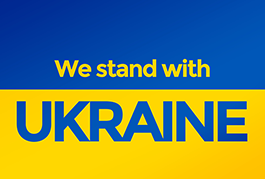Protecting IoТ Wearable Devices from Electromagnetic Radiation Using Radio-Opaque Fabrics
DOI:
https://doi.org/10.31861/sisiot2023.1.01007Keywords:
IoT, radio-opaque fabrics, shielding coefficient, frequency, electromagnetic fieldAbstract
The number of sources of electromagnetic radiation is increasing every day. In most cases, electromagnetic radiation has a negative effect on the human body, animals, and other living beings. Electromagnetic radiation negatively affects the operation of electronic devices. Due to the electromagnetic radiation of electronic devices, information may leak from them. The negative impact of electromagnetic radiation on the human body provokes a high level of fatigue, headache, heartache, etc. The everyday use of mobile equipment, household magnetic appliances (for example, microwave ovens), and telecommunication networks puts the majority of the planet's population at risk. Otherwise, the external influence of electromagnetic fields on the various sensors used in the IoT can contribute to receiving incorrect data from the sensors. The powerful external influence of the electromagnetic field on devices that process large data sets can contribute to a failure in mathematical calculations. Thus, protection from electromagnetic fields is necessary not only for electronic devices but also for human protection. Radio-opaque fabrics are one of the modern materials for protection from electromagnetic radiation. They can be used to protect stationary objects and wearable IoT devices and to protect people. Industrial samples of foreign and Ukrainian radio-opaque fabrics were analyzed in the work. Ukrainian manufacturers continue to develop new variants of radio-opaque fabrics. The next options for radiopaque fabrics are fabrics G7, G8, and G9. The article proposed and described a method of researching the shielding properties of the fabric. Experimental studies were carried out, and the shielding coefficient was calculated in the frequency range of 50 MHz - 2 GHz for two fabrics G7 and G8. Experimental studies were carried out for two cases of the location of fabric fibers relative to the radiating antenna and field polarization. Plots of dependences of the shielding coefficient for two fabrics with different locations of fabric fibers were presented. A comparative analysis of the shielding coefficients of two fabrics was made, and relevant conclusions were presented.
Downloads
References
Vineeta Shukla, “Review of electromagnetic interference shielding materials fabricated by iron ingredients,” Nanoscale Advances Journal, vol. 1, issue 5, pp. 1640-1671, 2019. DOI: 10.1039/C9NA00108E.
S. Geetha, K.K. Satheesh Kumar, Chepuri R.K. Rao, M. Vijayan, and D.C. Trivedi, “EMI Shielding: Methods and Materials – A Review,” Journal of Applied Polymer Science, vol. 112, pp. 2073-2086, 2009. DOI: 10.1002/app.29812.
Da-Eun Kwon, Dong-Hee Han, Kyung-Hwan Jung, Seung-Jae Lee, Jang-Oh Kim, and Cheol-Ha Baek, “Performance and feasibility evaluation for radiation shielding of metal oxides: Monte Carlo simulation,” Journal of the Korean Physical Society, vol. 82, pp. 813-817, February 2023. DOI: 10.1007/s40042-023-00744-7.
J. Krishnasamy, A. Das, R. Alagirusamy, and G. Thilagavathi, “Textile fabrics and ferrite-loaded composite materials for electromagnetic-shielding applications,” Functional and Technical Textiles. Elsevier, pp. 313–332, 2023. DOI: 10.1016/b978-0-323-91593-9.00011-0.
N. Aral, M. A. Duch, and M. Ardanuy, “Material characterization and Monte Carlo simulation of lead and non-lead X-Ray shielding materials,” Radiation Physics and Chemistry, vol. 174. Elsevier BV, p. 108892, Sep. 2020. DOI: 10.1016/j.radphyschem.2020.108892.
T. Pušić, B. Šaravanja, and K. Malarić, “Electromagnetic Shielding Properties of Knitted Fabric Made from Polyamide Threads Coated with Silver,” Materials, vol. 14, no. 5. MDPI AG, p. 1281, Mar. 08, 2021. DOI: 10.3390/ma14051281.
L. Cheng, T. Zhang, M. Guo, J. Li, S. Wang, and H. Tang, “Electromagnetic shielding effectiveness and mathematical model of stainless steel composite fabric,” The Journal of the Textile Institute, vol. 106, no. 6. Informa UK Limited, pp. 577–586, Jun. 23, 2014. DOI: 10.1080/00405000.2014.929275.
M. J. Roeterink, D. G. Kelly, E. G. Dickson, M. T. Andrews, and E. C. Corcoran, “Analysis and Monte Carlo modelling of radio-opaque personal protective fabrics,” Journal of Radioanalytical and Nuclear Chemistry, vol. 300, no. 3. Springer Science and Business Media LLC, pp. 1131–1139, Feb. 27, 2014. DOI: 10.1007/s10967-014-3039-8.
B. Mohamadzade, R. M. Hashmi, R. B. V. B. Simorangkir, R. Gharaei, S. Ur Rehman, and Q. H. Abbasi, “Recent Advances in Fabrication Methods for Flexible Antennas in Wearable Devices: State of the Art,” Sensors, vol. 19, no. 10. MDPI AG, p. 2312, May 19, 2019. DOI: 10.3390/s19102312.
M. U. Ali Khan, R. Raad, F. Tubbal, P. I. Theoharis, S. Liu, and J. Foroughi, “Bending Analysis of Polymer-Based Flexible Antennas for Wearable, General IoT Applications: A Review,” Polymers, vol. 13, no. 3. MDPI AG, p. 357, Jan. 22, 2021. DOI: 10.3390/polym13030357.










